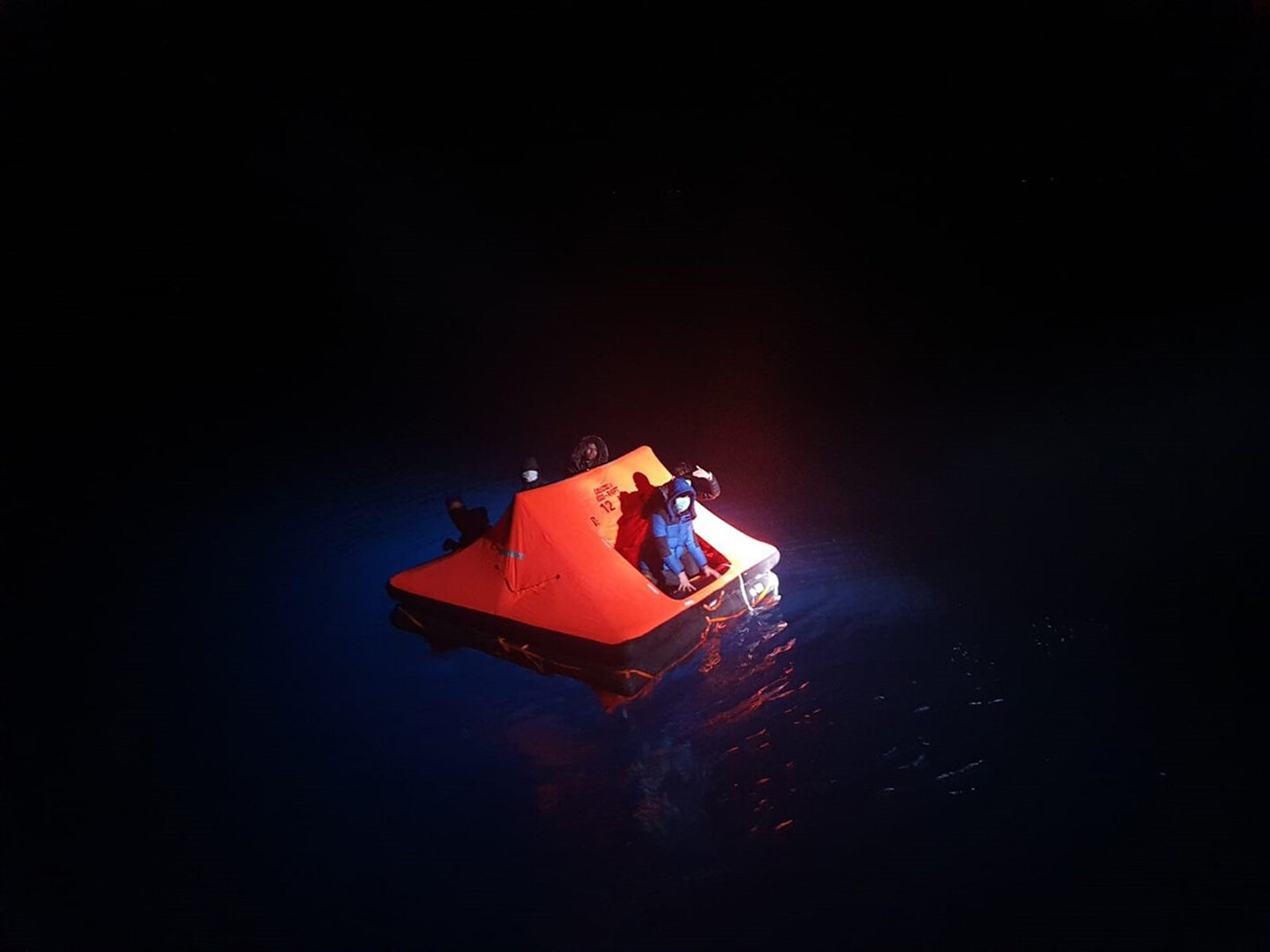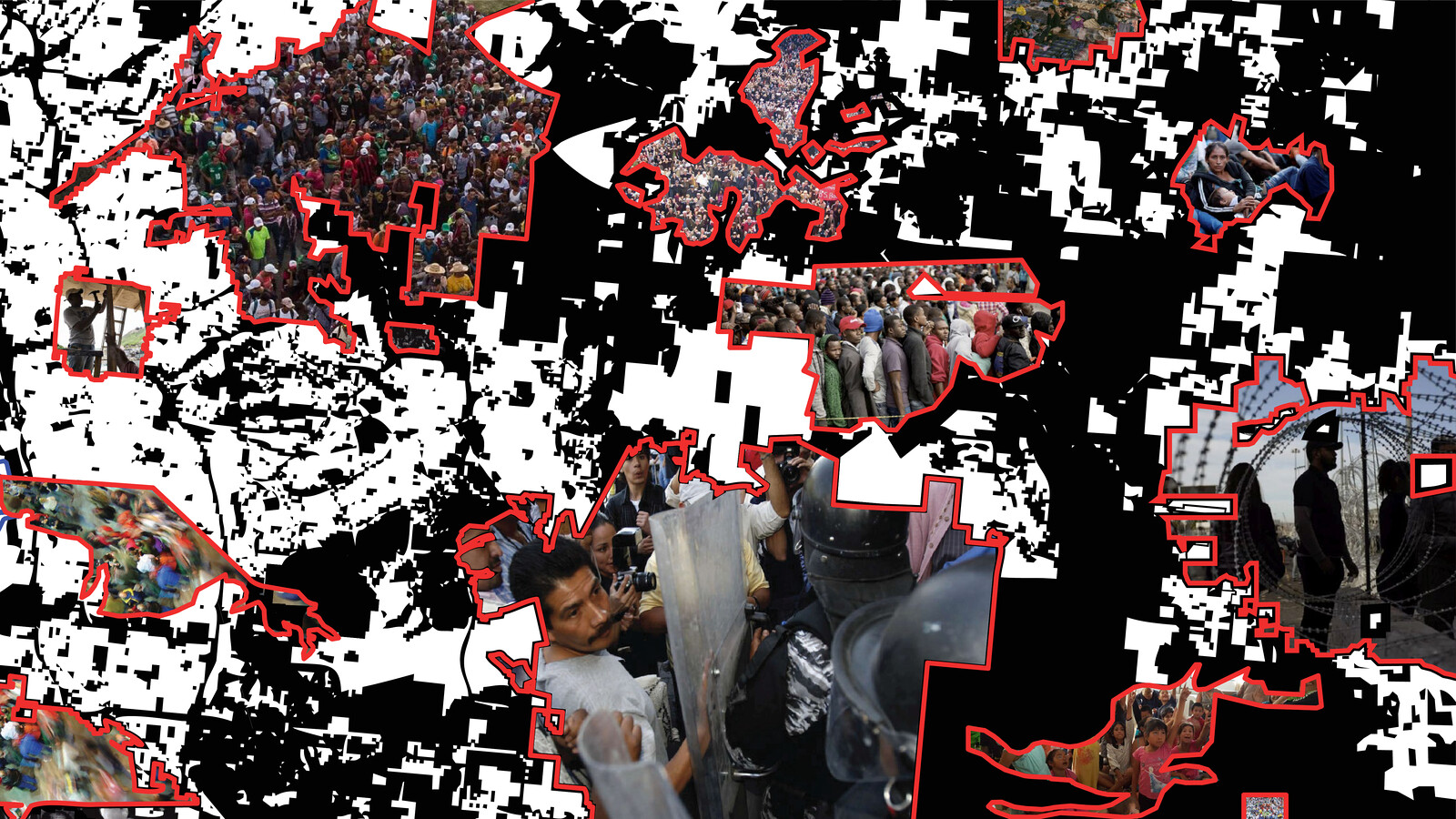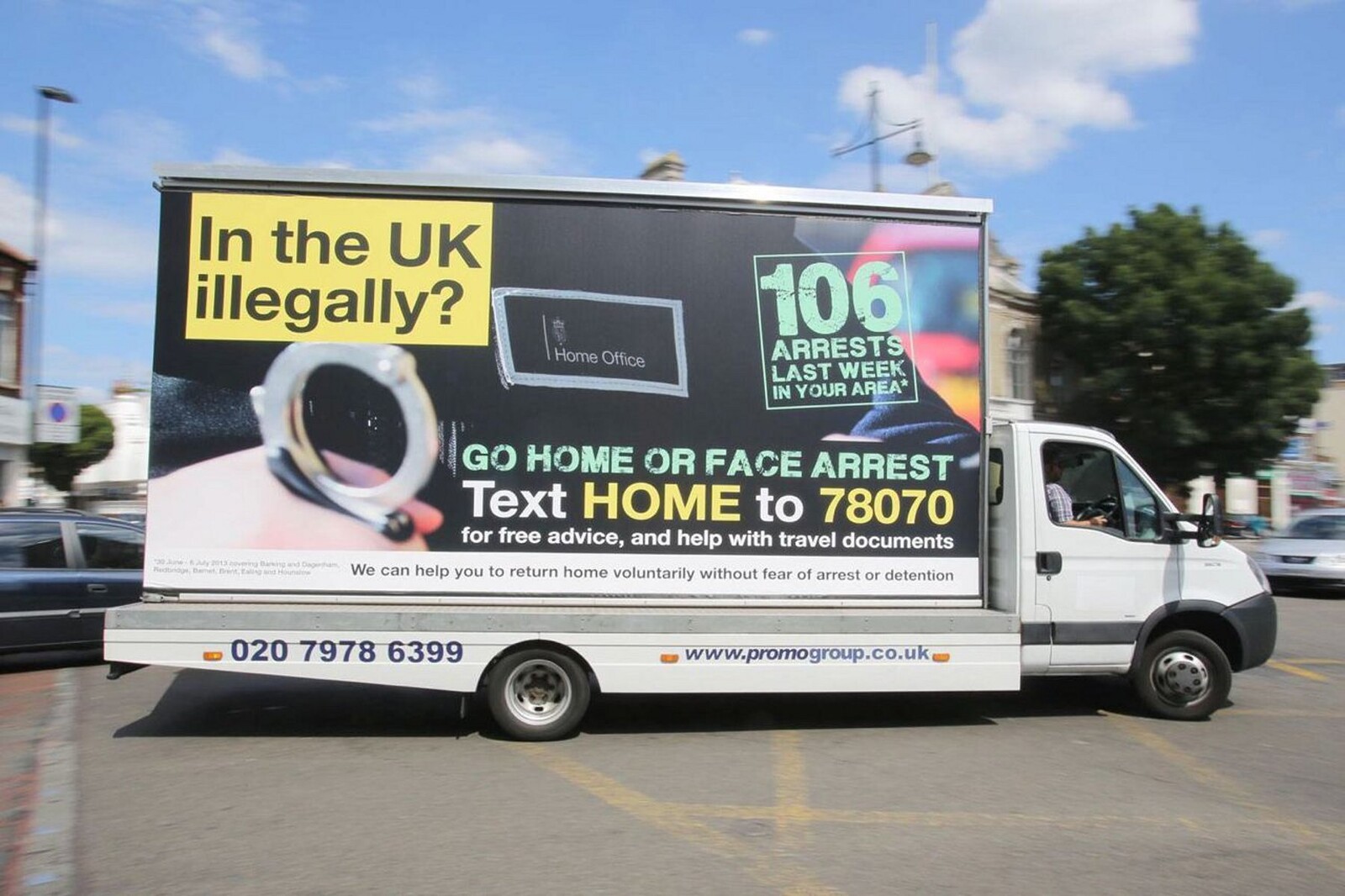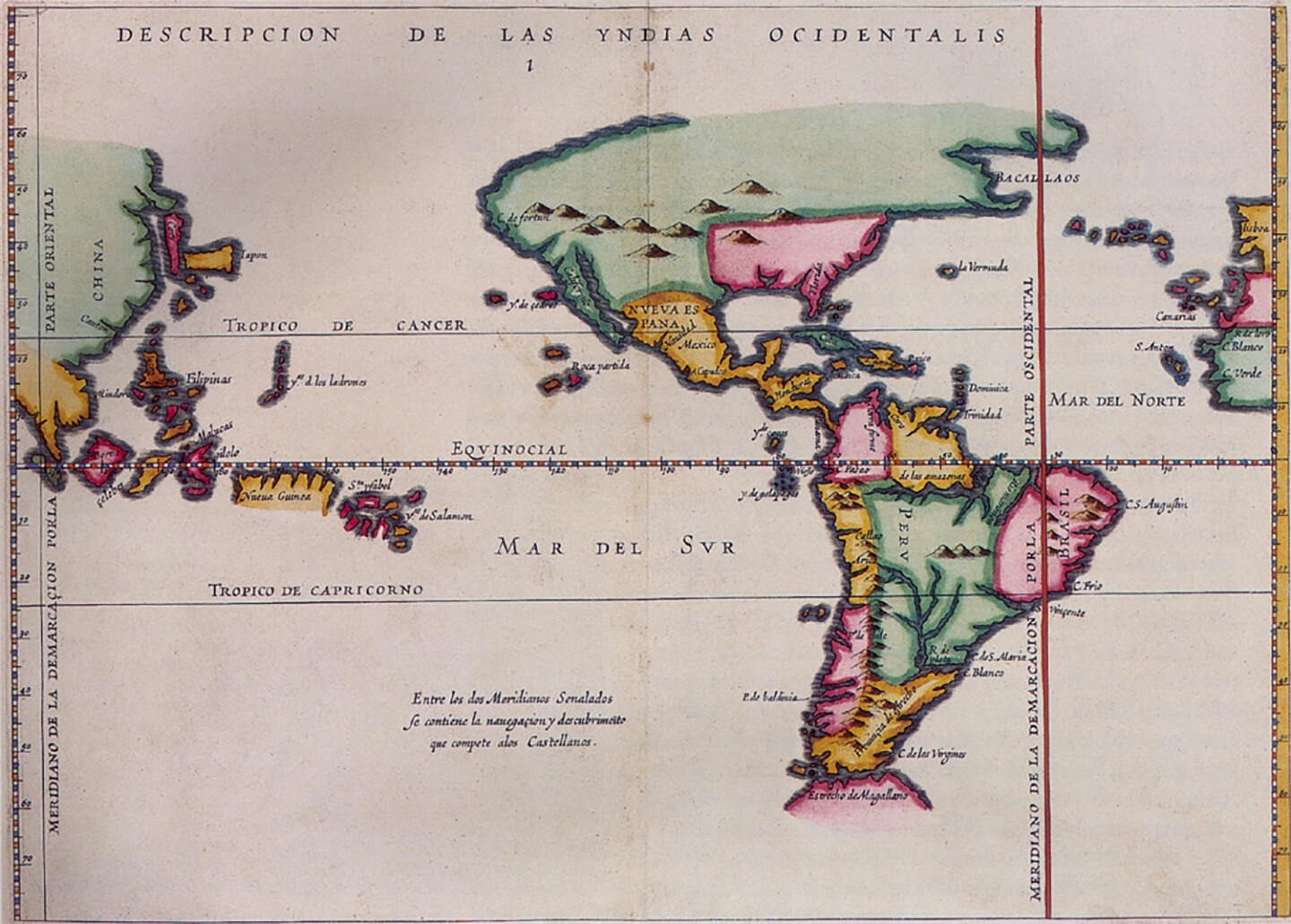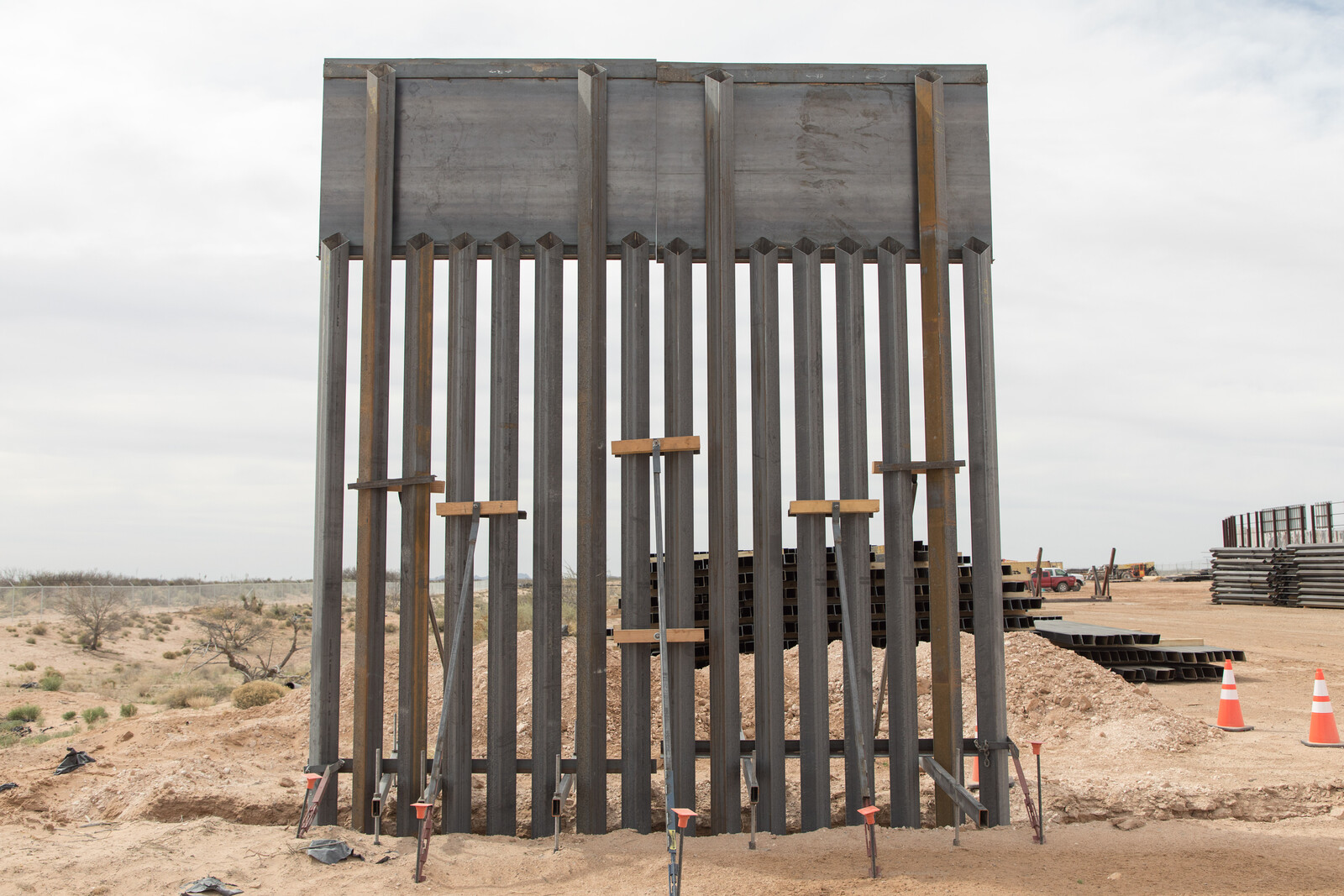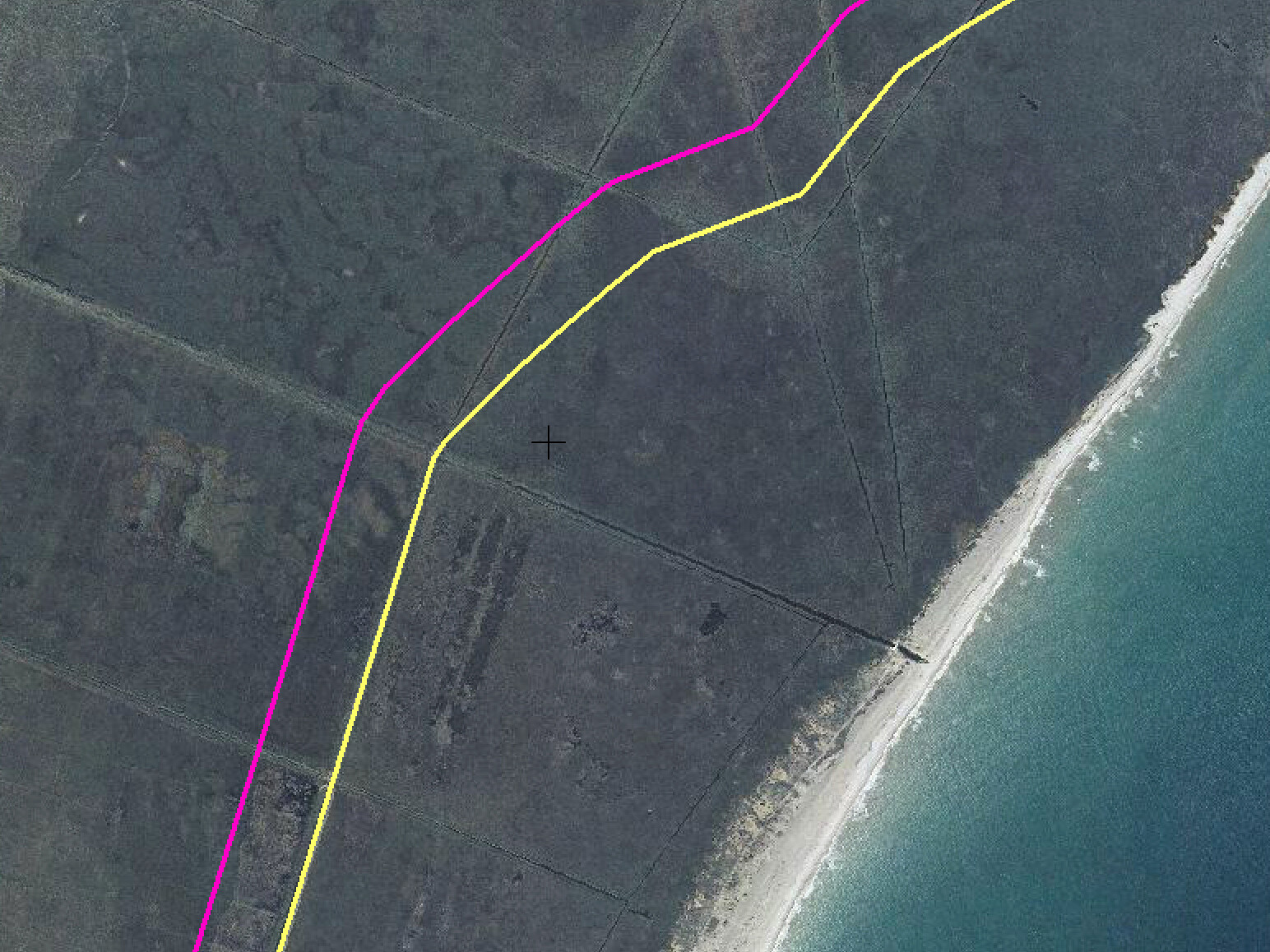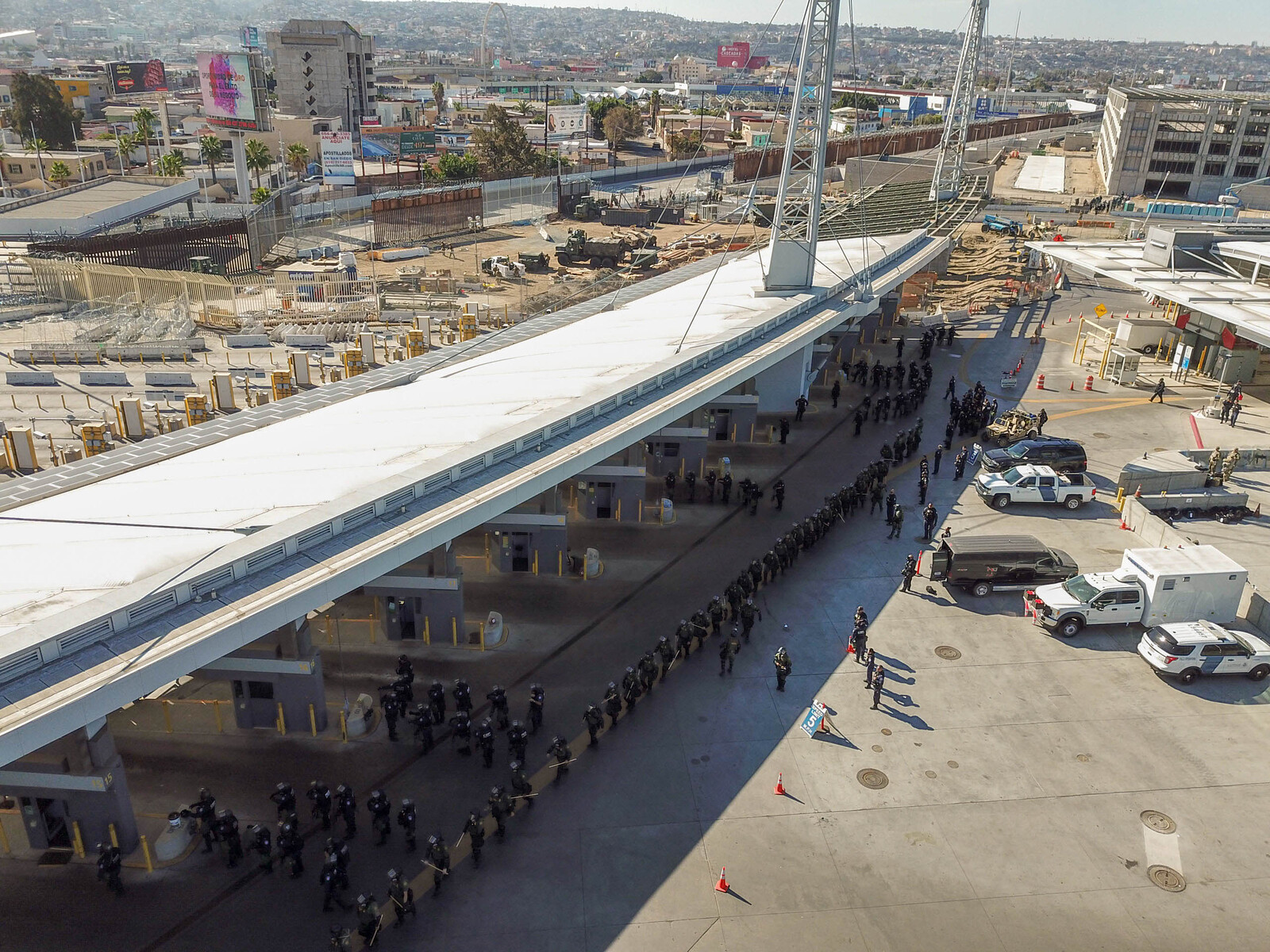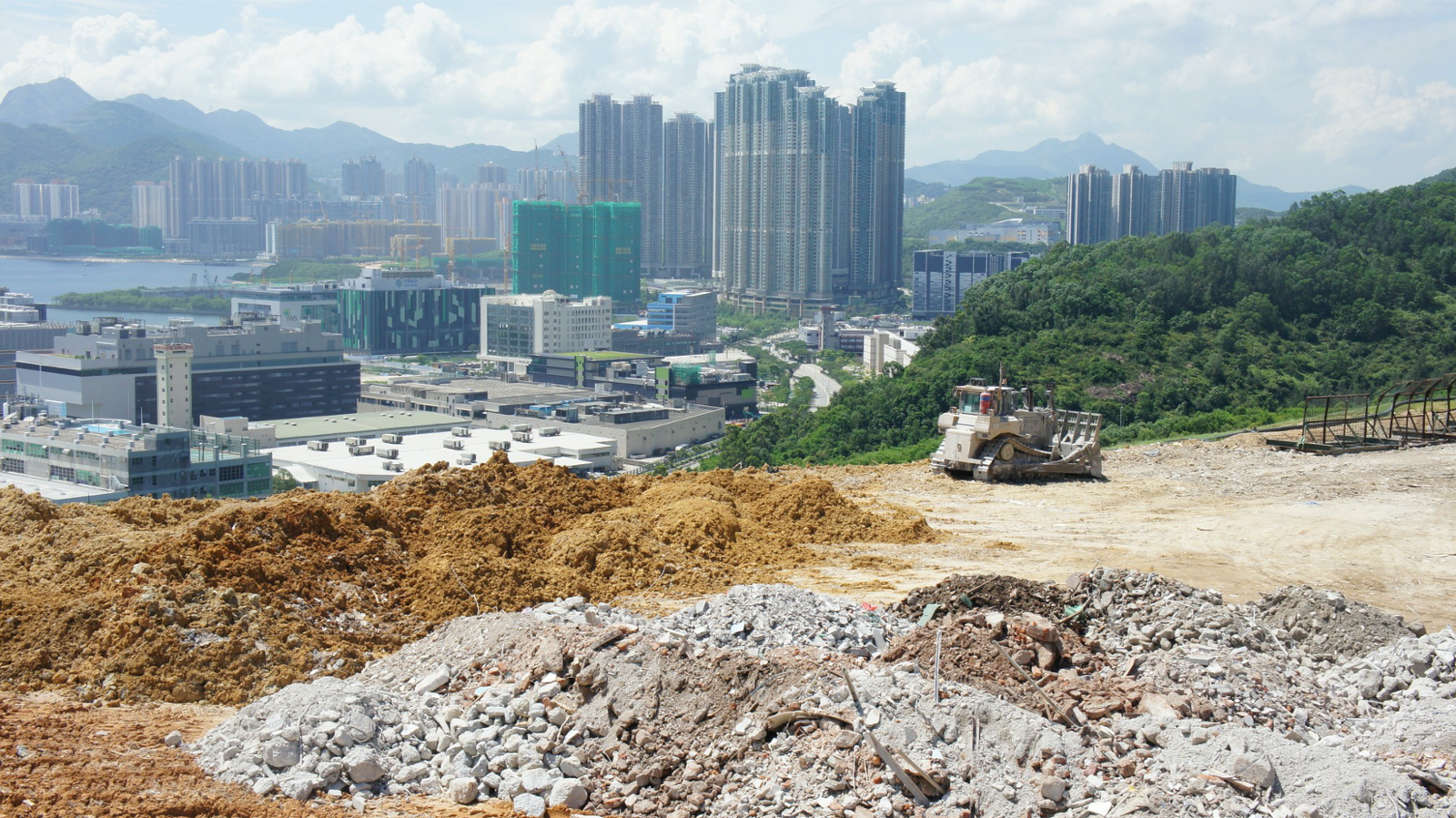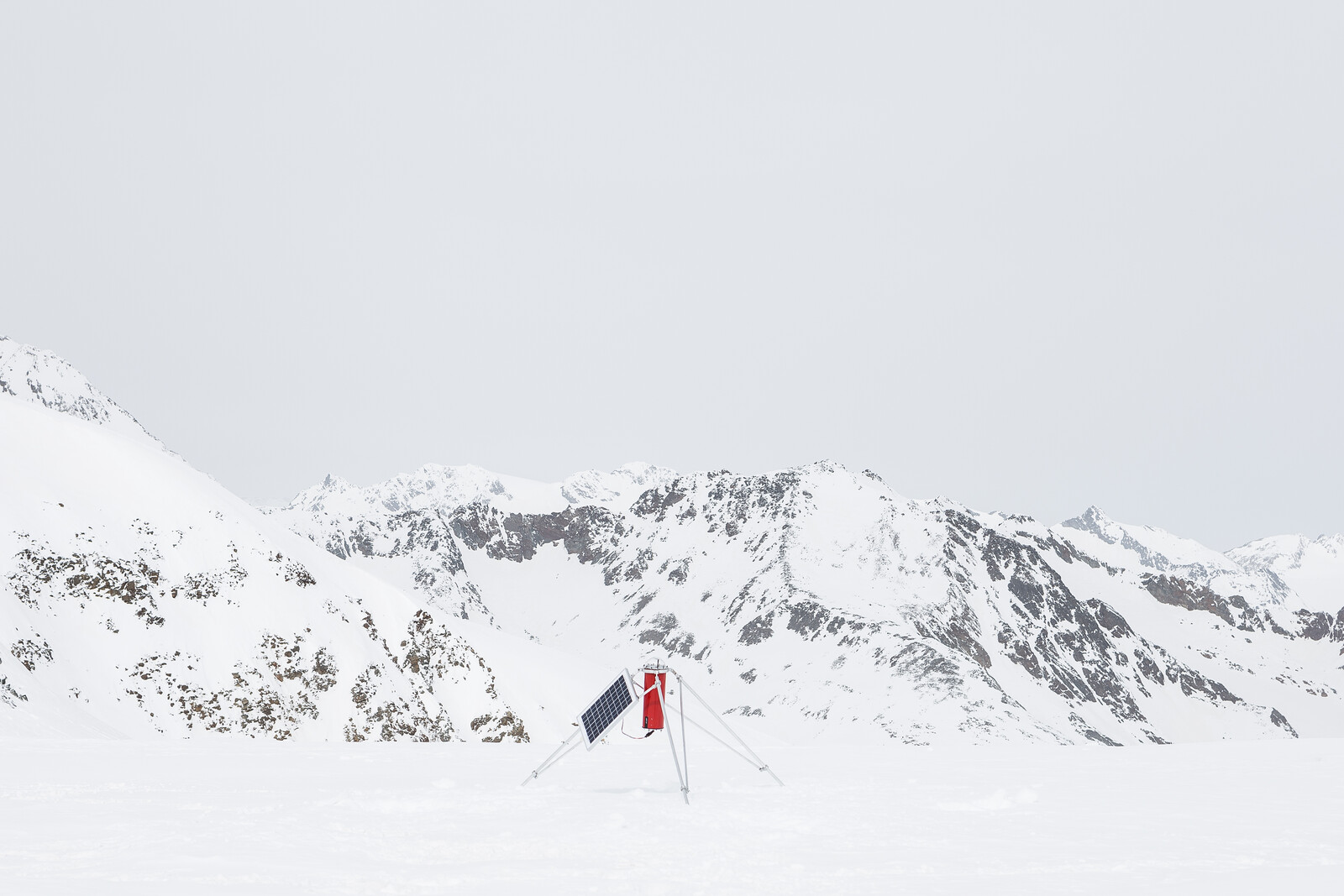Introduction
After three months of stringent restriction on travel to and within the EU, Monday June 5 was heralded by the EU Commission as the “re-Open Borders Day of Schengen Area,” and several European states chose this date to lift travel limitations between themselves for European citizens.1 After beginning to lift the measures of confinement within their countries, states are now partly “de-confining” their borders. This step, part of a phased process of reopening borders between countries designated as “safe” in terms of the pandemic, is still far from restoring freedom of movement across the EU, and it is even further from granting all people—including populations of the global south—the equal right to move and stay.2
Over the last months “the war on the virus” has been used by European states to step up their “war on migrants,” and border violence against migrants whose movement has been illegalized and precaritized by restrictive legislations has intensified.3 “Re-Open Borders day” then marks a step in the return to the “normal” of a highly unequal global mobility regime, which, despite being usually couched in neutral technical language, in effect uses the category of citizenship to police (im)mobility according to global geographies of race and class. At the same time, with the selective re-opening of EU borders, we see the emergence of the risk of infection as a crucial new category organizing the (im)mobility of people, giving rise to what I call a “sanitary apartheid.” These old and new logics organizing global (im)mobility are distinct, but enter into complicated relations—at times overlapping and reinforcing each other, at others entering into contradiction.
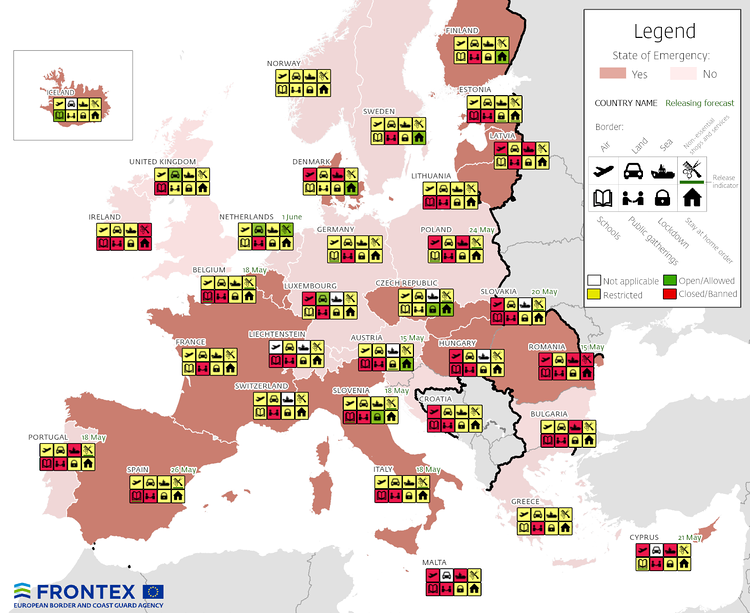

Map of restrictions imposed by governmenets across Europe in response to COVID-19, as of May 14, 2020. Source: Frontex.
Pandemic transformations of the geographies of borders and (im)mobility
If the term “pandemic” etymologically refers to a disease affecting “all people,” it quickly became clear that despite the new coronavirus spreading globally it would not affect us all in the same way.4 On the contrary, state policies deployed in response to the pandemic have exacerbated existing social boundaries, inequalities, and conflicts, while also partly reconfiguring them. In the process, these policies have exposed the different segments that compose our societies to differential forms and levels of vulnerability.5 This is true of the policies of confinement applied by states across the scales of cities and regions within their territories, as well as limitations on international travel imposed at their borders through which they have sought to confine their countries as a whole. The term “confinement,” with its etymology linked to confines—an older term for borders at present rarely used in English but common in most Latin languages—suggests a connection between these internal and external policies which hinge on imposing new limits to human sociality and mobility.6
Throughout history, human mobility has repeatedly been singled out as a major factor in the spreading of infectious diseases. Historians show us that the plague or cholera epidemics spread along sinuous paths, through the movement of armies, traders, pilgrims, and then proliferated within Europe as a result of overcrowded cities and work places as well as lack of sanitation.7 The global spread of the new coronavirus has been enabled today by a dense network of mobility infrastructures, in particular of global air travel. As in the past however, it is also particular mobile subjects—racialized, classed, gendered—that have been targeted by popular resentment and state sanctions alike.8 In early March 2020, for instance, after Hungary detected nine cases of infection among Iranians (mostly university scholarship-holders), Hungary’s Prime Minister Viktor Orban declared: “Our experience is that primarily foreigners brought in the disease, and that it is spreading among foreigners.” He was quick to seize upon these cases to conflate the declared “war on the pandemic” with the war on migration he and other European states have been waging for years, stating: “We are fighting a two-front war, one front is called migration, and the other one belongs to the coronavirus, there is a logical connection between the two, as both spread with movement.”9 Orban’s statement exemplifies the articulation of the containment of an invasive pathogen with the containment of certain kinds of “invasive” people.10 While the simple equation (racialized) migration = virus is absurd, it would be just as absurd to deny the impact of human mobility across different scales (including that of migrants) on the spread of the virus. After all, as one epidemiologist put it: “it is not the virus that moves, but people.”11
The analysis of epidemiologists suggests that it is less the insecure movement of illegalized migrants that contributed to the global spread of the virus than the mobility of privileged travelers—those with the right passport and the right amount of cash—jetting across global transport hubs for business and tourism.12 Human movement in and of itself does not spread the virus as long as long as it does not involve close proximity and contact in confined spaces with people who may be infected. However, the collective transport infrastructures that organize our mobility at present such as buses, metros, trains, and aircrafts have been shaped by the imperative of carrying the highest number of people in the smallest possible space. This makes it very difficult for travelers to avoid physical proximity in the course of their mobility, which is conductive to spreading the virus. In addition, mobility infrastructures often converge in hubs that concentrate people in confined space before their paths branch off again. Research by a team of engineers based at Stanford demonstrates that after being brought to several European countries from China, “the novel coronavirus spread rapidly via the strongest network connections to Germany, Spain, and France, while slowly reaching the less connected countries, Estonia, Slovakia, and Slovenia. Although air travel is certainly not the only determinant of the outbreak dynamics, our findings indicate that mobility is a strong contributor to the global spreading of COVID-19.”13 While high connectivity has long been a marker of power and privilege within a highly uneven world order, it had now become a source of increased vulnerability.14
While the first cases of Covid-19 in Europe were detected in early January 2020, most states only implemented wide-spread confinement measures within and at the borders of their countries in mid-March.15 The virus was thus allowed to spread at great speed across the EU, overwhelming national health systems—particularly where these had been diminished by years of imposition of neoliberal management logics and cuts to their budgets.16 On March 13, the WHO declared Europe “the epicenter” of the coronavirus pandemic, with more reported cases and deaths than the rest of the world combined. After failing to react early and with unity within and beyond Europe, EU states scrambled late and with national(ist) responses. As Josef Borocz summarizes, “each member state turned inward, in almost complete unison.” Europe was “carved up into twenty-seven ‘national’ fortresses, ostensibly to ‘flatten’ the national curves of coronavirus infections.”17
Lockdown policies involving varying degrees of constraint confined most people in Europe to their homes, a space which, while representing an imaginary of security for some, is highly problematic for other segments of our societies—such as the homeless or women for whom the home represents a space of domestic violence.18 The little movement that has been able to be exercised has been channeled by lines of bright colors that have proliferated, for example on the floor in shops, in the name of “physical distancing.” New lines of control have also proliferated at the extremities of states, as one after the other they sealed their national borders—despite the World Health Organization’s advice not to do so.19 On March 16, 2020, the European Union as a whole announced the closure of all its external borders to non-citizens, confining the continent itself.20 In Europe as across the world, these drastic lockdown measures “immediately affected the side of production and circulation of goods and services,” triggering an economic crisis of a scale comparable to (and in some sectors more severe than) the 2007–2009 financial crisis, which will continue to have dire repercussions for the foreseeable future.21
With all external and most internal borders closed, the EU celebrated on March 26, 2020 a bleak twenty-fifth anniversary of the Schengen Agreement that guarantees unrestricted movement for EU citizens between member states. By then, the average passenger air travel in Europe had been cut in half. The month of April saw continued drastic reduction—according to Eurocontrol, 91%—in the number of flights to, from, and within the EU.22 In short, as Frontex, the European border agency summarizes, what has ensued within the EU “goes well beyond the reintroduction of border controls within the Schengen area. Rather it constitutes a closing down of the borders to whole groups of travelers, in some cases even Union citizens.”23 If the denial of the right to move faced by most citizens of the global south has long been at odds with the privileged’s right and access to international mobility of citizens of the global north, in the wake of new coronavirus pandemic, restrictions on movement have been generalized. EU citizens in particular, who normally benefit from the freedom to move within the EU and face few restrictions in their travel across the globe, have been getting a taste of the unfreedom experienced by those at the bottom of the global mobility hierarchy.24
If the relation between global mobility and the spreading of the virus is recognized, the closing of borders to prevent the spreading of a pandemic is a highly contested measure among epidemiologists.25 The World Health Organization (WHO) has advised against travel restrictions with the exception of very specific circumstances, and health and human rights experts have argued that these violate international law.26 Generally, limitations on travel are considered a double-edged sword that should be wielded carefully by weighing positive and negative effects, and always as part of a broader range of measures.27 Crucially, the consensus among experts that the EU agencies such as the European Centre for Disease Prevention and Control (ECDC) and Frontex acknowledge, is that drastic lockdown of borders can only be effective if they are implemented early on, before a virus has been introduced into the population. This means that while the swift closing of borders across the African continent appears to have contributed to delaying the initial spread of the virus, the measures that were introduced after Europe had become the epicenter of the pandemic had limited effect.28 Border closures in Europe and elsewhere have mostly served a performative function, allowing states to demonstrate their resolve through the spectacular exercise of their sovereign power, even as the spread of the virus demonstrated their weaknesses and failures at so many other levels.29
While the privileged classes who have benefited the most from global mobility could protect themselves by staying immobile within the confines of their homes, this was not a luxury that illegalized migrants seeking to reach the EU could afford. The EU Commission’s statement on the application of “temporary travel restrictions” did contain a limited number of exceptions, including concerning “persons in need of international protection or for other humanitarian reasons,” but these have not been used to keep pathways open.30 Instead, several EU states seized upon the occasion of the “war against the virus” to legitimize and intensify the war against migrants they had been waging for years.31 The violence migrants are subjected to at and through borders has intensified across the internal borders of the EU—such as between France and Italy—as well as its external land borders and along the Balkan routes, where migrants face conditions of extreme precarity amplified by the virus.32
In few places has border violence been exacerbated as a result of the pandemic to such an extent as along the Mediterranean frontier, where border violence has long been endemic.33 The movements of the people of the global south across the sea violently clash with bordering operations deployed since the early 1990s by European states to impose their restrictive migration policies. While the EU’s visa policies are usually couched in neutral technical language, these policies use the category of citizenship to allocate differentially the right to move to populations of the global north and south.34 The geography of inclusion and exclusion that emerges as a result in effects maps onto a global geography of race and class. As such, Etienne Balibar has long written of a “global apartheid,” referring to the South African regime to underline the logic of separation at work on a global scale, which in turn, and crucially, shapes enduring inequalities of status and conditions within societies.35 Populations of the global south are, however, not the passive recipients of this regime of differential (im)mobility. It is contested by migrants who seize their freedom to move despite state policies that deny them their rights. It is the very contestation of global apartheid by migrants that leads to an enduring “mobility conflict” that crystallizes most starkly along particular border zones, such as the Mediterranean.36
While European states and agencies have deployed militarized means of border control to police the movements of illegalized migrants from the global south across the sea, it is generally not the bullets of border guards that inflict harm onto their bodies. Rather, policies that illegalize migrants’ journeys force them to resort to smugglers and embark on overcrowded and unseaworthy vessels. This leads to frequent situations of distress at sea, and the reluctance of European states to rescue migrants results in them frequently being abandoned to the winds and currents. At work across the maritime frontier then is predominantly a form of indirect violence that kills without EU states directly touching migrants’ bodies. Instead, this violence is inflicted by policies and operations that turn the sea into a hostile environment for migrants: more than 40,000 deaths have been documented at the EU’s borders over the last thirty years, the majority from drowning.37 At the external edges of its compartments, the global mobility apartheid then structurally leads to the “premature death” for classed and racialized migrants who, like the racialized victims of police violence within states, can’t breathe.38
The mechanisms operating this form of indirect violence at and through the sea have mutated over the last months. In the eastern Mediterranean, after a peak of border violence in early March following the temporary collapse of collaboration between the EU and Turkey, the Greek coast guard has been using a new tactic of calculated abandonment by forcing migrants into rescue rafts with the aim of pushing them back to Turkey.39 In the central Mediterranean, migrants attempting the crossing have not been able to count on the presence of rescue NGOs, which were further hampered in their activities as a result of state responses to the pandemic.40 Italy and Malta, followed by Libya, declared their ports unsafe in light of the virus and retracted themselves from the organization of rescue activities. This has led to an escalation in the politics of abandonment as well as the brazen organization of privatized push-back operations to Libya with the help of merchant or fishing vessels.41 In violation of the principle of non-refoulement, migrants have continued to be brought back to the “hell” that Libya represents for them.42 And those who have succeeded in reaching the shores of Italy and Malta have been quarantined for weeks on ferries used as floating detention centers.43 Conditions of detention reserved to migrants here and elsewhere across Europe do not respect migrants’ dignity and rights in general, and migrants’ right to protect themselves from the virus in particular. While European States have demanded their citizens protect themselves and others by confining themselves to their homes, the forced confinement of migrants in secluded and overcrowded camps knowingly exposes them to a serious and imminent risk of contamination.44
Illegalized migrants have thus been facing increased violence, denial of rights, and risk to their lives within and at the borders of Europe as a result of policies deployed in the name of slowing the spread of the virus. Violence against migrants and racialized populations—starting with Asian-looking populations—proliferated as fast as the coronavirus pandemic, across Europe, and much of the rest of the world.45 In Europe, this exclusionary violence was peaking at the very same time as migrants and racialized segments of the population were contributing an important share of the precarious but “essential” work that could not be interrupted—or which the state and employers refused to. This has been particularly true of the health sector: in OEDC countries 16% of nurses and 24% of doctors are born abroad.46 As a result, migrants and racialized populations (and among them women, who for example make up almost 70% of the health care workforce), have been made more vulnerable to the virus, while at the same time being excessively targeted by what Didier Fassin calls the “sanitary police” deployed to enforce the lockdown measures.47
As Ruth Gilmore Wilson has noted, this differential vulnerability in the face of the virus, along the lines of class, gender, and so glaringly race, have laid the ground for the global uprising against anti-Black racism that we are witnessing today.48 However, just as state borders were being sealed and social boundaries within societies hardened, channels of labor recruitment were being opened by states in a hurry. The precaritized migrant labor already present within EU countries was apparently not sufficient for certain sectors of the economy to keep on running, such as agriculture. Flights were specifically chartered to carry seasonal workers from Eastern Europe to work in Germany’s all-important asparagus harvest without the slightest care for their protection either during the travel or during their labor, which led to cases of infection and death amongst the recruited workers.49 Just as in the management of the nineteenth century cholera outbreak analyzed by historian Valeksa Huber, borders in the time of the new coronavirus have operated as “semipermeable membranes,” selectively blocking and channeling mobilities.50 In the process we are seeing simultaneously the reproduction and the transformation of profoundly racialized and classed geographies of inclusion/exclusion.
This variegated geography of inclusion/exclusion is apparent as well in the current “reopening” of the EU’s borders. While the process is meant to be organized by the logic of bringing together states with “similar overall risk profiles,” EU member states are lifting travel restrictions within complicated geographies and at variegated pace, reflecting the same lack of coordination the closing of borders had three months ago.51 The initial announcements of the re-opening of Western European states between themselves—at the exclusion of Italy and Spain, for example—could appear to replicate the intra-European core-periphery geography, which has been at work with regards to austerity policies, for example. But this enduring European hierarchy is also troubled by instances such as Greece, which in its reopening offered privileged access to Eastern European countries with low rates of infection rather than to travelers from Western European airports deemed “high risk.”52 And recently, the EU defined a list of non-EU countries from which citizens should be able to travel again to the EU, which excludes the USA because of the country’s rising infection rate.53 The matrix of categories of race, class and citizenship that durably structures the global mobility regime is thus being complicated by a new criterion: a country’s rate of Covid-19 infection. Sanitized “travel corridors” or “travel bubbles” allowing for smooth mobility for those who are labelled “covid free” are emerging in Europe and across the world.54 As Huub Dijstelbloem and William Walters have noted, the term “bubble” does not designate “fixed or permanent enclosures,” but rather temporary, adaptable and fragile spheres.55 Transport bubbles will expand and retract as a function of changing rates of infection and diplomatic bargaining. They may also burst without notice. The bubble metaphor may conjure harmless childhood memories, but travel bubbles will be predicated on the hardening of sanitary policing and exclusion around them.
In short, the coronavirus pandemic has complicated the geographies of inclusion/exclusion: the global apartheid which uses citizenship and visa restrictions to police the differential access to mobility founded on race and class, is now being supplemented by a fluctuating “sanitary apartheid,” the mobile borders of which are beginning to emerge as states ease their internal and external lockdown measures. In some instances, the old and new logics of inclusion/exclusion overlap and reinforce each other—as when Greece opens up to (some) summer tourists but keeps migrants sealed off in overcrowded camps and pushes back those who seek to reach its shores.56 In others, the pandemic introduces a disjuncture, or even temporary reversals—as when African states introduced travel restrictions to travelers coming from Europe, and Moroccans began crossing the sea illegally but this time in the opposite direction.57
The politics of freedom of movement in times of the pandemic
In this context of profound transformations of borders and the politics of (im)mobility, what progressive agendas can one forge, in particular with regard to illegalized migrants? Activists and researchers alike have long argued that state policies aiming to deny migrants from the global south the right to move across borders are unjust and ultimately fail, precaritize migrants’ lives, and generate profound political crises.58 As I have argued elsewhere, European citizens and policy makers alike must realize that in an interconnected world marked by sharp inequalities and crises of all sorts, the question is not whether migrants will exercise their freedom to cross borders, but at what human and political cost.59 State policies can only create a legal frame for human movement to unfold and thereby partly organize it; they cannot block it completely. Despite this, the demand for a regime founded on the equal right of all to exercise their freedom to move was already a minoritarian position. It is a position even more difficult to defend in the context of the pandemic, as a result of the current association of “foreigners” with the fear of contagion and the deployment of police measures in the name of protecting life. To affirm in discourse and in practice the demand for a policy founded migrants’ freedom to move today, we must take seriously the risk that the (free) movement of people may contribute to spreading the virus.60 Taking this risk seriously is the condition to devise solutions to mitigate it without compromising on migrants’ rights and freedoms.
As argued above, despite the reality that the virus spread across the globe through the movement and contact of people enabled by global transport systems, the drastic closure of EU borders has had limited effects in preventing the spread of the pandemic, while it had dramatic effects on illegalized migrants’ lives and beyond that entailed “societal and economic disruption in the EU.”61 As a result, instead of blanket closure, epidemiologists, including those of the European Centre for Disease Prevention and Control (ECDC), advocate a careful reopening of international travel.62 While the current form of collective transport infrastructures that involves the physical proximity of passengers will not allow to reduce the risk of transmission to zero, the ECDC suggests a number of measures that can be introduced to mitigate it. These start with providing information to travelers before departure about the risks and symptoms of COVID-19. Since risks will remain, one may hope that we will collectively limit our travels to those that are necessary. For those who choose to or must, the ECDC recommends the application of all the standard measures of physical distancing, hand hygiene and facemasks during travel. And upon arrival, passengers may be screened and even quarantined if a risk has been identified.
The ECDC’s recommendations concerning these basic sanitary measures to mitigate risk in the course of our mobilities across different scales appear sound. The modalities of international travel can and must be transformed, without limiting the right of people to do so. We should however bear in mind the lessons of historians concerning the ambivalence of measures of risk mitigation.63 Today as in past pandemics such as cholera, it is likely that the imperative to perpetuate “productive mobilities” while limiting the spread of the coronavirus will lead to a speeding up in the development of new tracking technologies—such as the many covid applications designed to trace contacts if a person is found to be infected, and new means of identification—such as the “Covid-19 passport” mulled by the EU to identify the health status of its owner.64 While we cannot rule out that some technologies may indeed by helpful to detect infected cases early and trace their contacts so as to avoid the spread of the virus, there is a real risk that the deployment of new means of “bio-digital-surveillance” heighten the already existing trend towards more invasive forms of control that turn the body itself into a border.65 Whether they are used within or at the border of states, it will be essential to ensure collective ownership and oversight of these means so that they do not infringe on rights and liberties, and that equal treatment is guaranteed.66
The same rationale of minimizing risk during travel should be adopted for illegalized migrants, who will continue to cross borders regardless of the restive policies of states. Lack of access to legal and formal means of travel, however, make adopting the precautionary measures described above (and which the UNHCR also advocated for early on) far more difficult.67 How can one imagine illegalized migrants adopting physical distancing in overcrowded boats, or wearing face-masks after they have been deprived of everything for months by their Libyan captors? It is the very illegalization of migration that puts migrants’ lives at greater risk in general, and of infection of the covid-19 virus in particular. Unable to protect themselves, they are less able to protect the people they encounter. Granting migrants the right to cross borders in legal ways has long been the best way to mitigate the multiple risks that affect illegalized migrants’ lives. Today it is also a contribution to mitigating the risk of Covid-19 infection for them and others. In this sense, adopting policies founded on the freedom of movement of all people should be a measure we demand of our states now, not in some distant (post-covid) future. Likewise, granting legal status and the right to stay to irregular migrants already present in our countries, as has begun to be initiated in countries such as Portugal and Italy, are essential measures to guarantee that they have access to health care and welfare.68 Recognizing migrants’ right to move and stay, and ensuring that they are able to exercise their social and labor rights as well as their right to health is the condition to protect migrants and sedentary populations alike.
What the above suggests is that rather than nationalist “folding in,” the imposition of authoritarian sanitary measures and the fencing off of sanitized travel bubbles, what is necessary are new means of protection and solidarity at the local level—such as the minimum basic income implemented in Spain and universal health care.69 This should be combined with forms of international solidarity that should not be reduced to sending facemasks and testing kits but include broad debt cancellation, increased aid, and fair terms of trade so that populations and states of the global south can redirect resources towards addressing the health crisis.70 Popular participation is also essential to seize the very real risks of contamination away from the state-imposed sanitary police that entails the denial of rights and dignity, and foster instead “sanitary justice.”71 Based on solidarity and the recognition of rights, this approach allows us to engage in collective practices of “care for others and ourselves” and engage in common struggles to guarantee our access to the conditions that are essential to our protection.72
All these combined measures and approaches are essential to ensure that populations can be protected and protect themselves from the virus wherever they are, including in the course of their travel across borders. With greater equality and cooperation between countries as they seek to protect their populations from the pandemic, the need for the privileged to police sanitary bubbles would disappear. These are approaches that we must demand from (our) states, but that may also be adopted by nongovernmental actors supporting migrants. In addition to the tools NGOs have developed in the past to effectively act in solidarity with migrants, today they must also consider the new risks they face in relation to the coronavirus pandemic. Migrants rights’ NGO across Europe have engaged in this shift admirably in relation to migrant detention for example, demanding that migrants be released so as to be able to adopt the same protective measures as any other citizen, and be granted access to health care. The rescue NGOs that have been able to resume their operations at sea in June have adopted a range of sanitary measures to protect the health of their “guests” and crew. More work can however still be done to formulate specific demands and practices in relation to the new health risks that migrants face while on the move.
What might this attempt to articulate the demand for and direct support to migrants’ freedom to move and their protection from the coronavirus look like concretely? In 2015, in the wake of the largest shipwrecks in recent Mediterranean history—leading to the death of 1,200 people in only a week—WatchTheMed Alarm Phone, an activist network that manages an emergency hotline for migrants crossing the sea, demanded the freedom to move for all migrants. As a means of operationalizing this demand, the network proposed the idea of a humanitarian ferry “that should travel to Libya and evacuate as many people as possible” and bring them to Europe where they should receive unconditional protection.73 Five years later, this radical proposal of a ferry has not become a reality. The risk of being attacked by militias on Libyan shores and of not being able to disembark on European soil have made it too challenging to implement. It remains nonetheless effective as a utopian vision that opens up our political imagination. Merrily envisioning this possibility denaturalizes the daily images of migrants cramped in small rubber boats, and presents us with what might be one of the concrete manifestations of the institution of freedom of movement: the banal movement of people on board a ferry, such as those that have long connected the shores of the Mediterranean, and which, from the end of the Second World War to end of the 1990s, transported migrants who could relatively easily access visas to reach Europe.
How would the ferry the Alarm Phone imagined five years ago look today, in the context of the pandemic? Following the ECDC’s recommendations, passengers might receive additional information on sanitary measures upon embarking, and would be handed face masks; they would be spatially spread out in small groups throughout the space of the ferry so as to maintain physical distance all the while allowing for collective discussions concerning access to the right to asylum and the right to health on European soil; upon arrival, passengers would be screened and, should risk of infection be detected, some might be put into quarantine in spaces that allow to respect their dignity and rights. The “ferry with a facemask” we can imagine today is certainly different from the one envisioned a few years ago. Just like our societies, it has been transformed. But guided by the principles of solidarity, freedom, and equality, it remains a beautiful sight. In the time of the pandemic then, freedom of movement remains as fundamental a demand as ever before, and a crucial political compass to guide our practices of solidarity across land and sea in the present.74
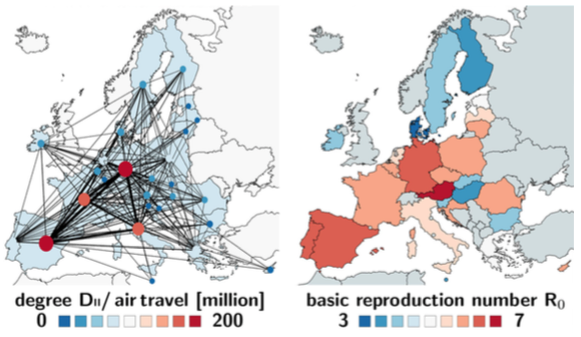

Figures representing data concerning COVID-19 outbreak dynamics across Europe. Source: Kevin Linka, Mathias Peirlinck, Francisco Sahli Costabal and Ellen Kuhl, “Outbreak dynamics of COVID-19 in Europe and the effect of travel restrictions,” Computer Methods in Biomechanics and Biomedical Engineering (May 2020).
Limiting the exercise of destructive mobility privileges: towards mobility justice
If it is essential to rethink the politics of freedom of movement in the context of the pandemic, one cannot abstract it either from the global uprising against anti-Blackness and racism, the acute economic crisis, and finally the climate crisis. Today more than ever, it is impossible to maintain the different crises that intersect in our global conjuncture separate, either analytically or politically.75 The concept of “mobility justice” developed by Mimi Sheller offers a useful lens to think of the way mobility operates across the nested crises of the present, and more importantly, how mobility might be thought of and practiced in a way that contributes to global justice. “We can think about mobility justice occurring at different scales,” Sheller writes, “from micro-level embodied interpersonal relations, to meso-level issues of urban transportation justice and the ‘right to the city,’ to macro-level transnational relations of travel and borders, and ultimately global resource flows and energy circulation.”76
Through the perspective of mobility justice, one is able to locate the movement of the othered and dispossessed which is limited and precaritized by the global apartheid within the same analytical frame as the high-speed and comfortable travel of those who are located at the top of the hierarchies of mobility. In continuity with colonial discourses, the movement of populations of the global south is today framed as “excessive,” while the privileged citizens of the global north have exercised their freedom to move at an excessive cost for the environment.77 While global air travel has grown exponentially, and until recently “more than a million people were literally flying through the air at any given moment,” less than 10% of the global population has ever taken a flight.78 High-speed carbon-intensive air travel—which accounts for about 2.5% of global carbon dioxide emissions—is one more manifestation of the destructive consumption of the privileged—mostly located in the global north—that must be challenged.79 In this respect, the temporary interruption of air travel can be seen as a positive outcome of the pandemic. Going back to the “normality” of mass air travel for the privileged is no more desirable then the perpetuation of the planetary apartheid for the othered and dispossessed.
Early on in the pandemic, Mimi Sheller asked what might be the ripple effects and tipping points triggered by this interruption of air travel, as well as other means of carbon-intensive mobility: “If airlines go bankrupt,” Sheller asked, “if trucking is severely reduced, and consumers stop buying new cars, will this actually kickstart the transition away from fossil fuels? As countries seek to recover and pull out of this mobility shock, will we seek to return to the high-mobility, high-energy, high-carbon economy of the past? Or will we begin the urgently needed shift to a low-carbon economy, one premised on more resilient, regenerative, and circular forms of local exchange? Could this be the push we needed to truly implement the low-carbon transition that scientists have warned us is necessary to stop the global climate emergency?”80
Since Sheller formulated her open-ended questions, some of the worst scenarios she considered have materialized: rather than investing massively in making their economies and societies sustainable, states have offered bailouts to airlines even as they layout their employees.81 The interruption of urban mobilities has also led to new hierarchies—such as among those who can work from home through digital technologies, and those who cannot and must take the risk of commuting in crowded public transport in which they run the risk of getting infected.82 But we have also seen some of the more optimistic scenarios Sheller considered being realized: to help people substitute their use of public transport without resorting to cars, “thousands of miles of new bike lanes have been built in cities from Milan to Mexico City, [and] huge swathes of residential streets in places from New York to Bogotá are being closed to traffic.”83
While contradictory tendencies coexist, what is certain is that the interruption of our socialities, mobilities, and economies has positioned us at a crossroads, in which radical changes that were deemed impossible only a few months ago are contemplated in a polyphonic debate. As Andreas Malm argues, “this is a moment where we can say to governments: ‘If you were able to intervene to protect us from the virus, you can intervene to protect us from the climate crisis as well, the implications of which are much worse.’”84 In other words, even as states and societies are still struggling to slow the curve of the rate of covid-19 infections, it is urgent we act to slow the curve of carbon emissions as well.85
The question then, as Achille Mbembe has put it, is how we can turn the interruption the pandemic has forced upon us into a voluntary and conscious one?86 In turn, and in light of principle of freedom of movement, we must ask how the interruption of air travel (and other mobilities that feed upon and fuel the carbon economy) might be perpetuated as states and societies partly open up, without compromising the freedom of all to move across borders? One can answer this difficult question by being attuned to the inequalities of contemporary (im)mobility, and challenging the dominant understanding of freedom. As Anne-Laure Amilhat-Szary has argued, in the time of the pandemic, the privilege of mobility has partly been replaced by the privilege of immobility.87 In this context, those who cannot stay where they are because of wars, political and economic crisis, or the lack of prospect to realize their lives, will continue to move no matter what restrictions states impose, and they must have the right to travel with safe and legal means. But those who are privileged enough to be able to stay put and limit their travel should do so, as one among many other necessary contributions to the decarbonization of our economies and societies. This collective process of self-limitation of movement, which should be accompanied by state regulations and taxes on polluting fuels, and investments into alternatives to air travel, such as rail systems, need not be seen as an unfreedom.88 Once one “decolonizes our imaginaries from the ethics of limitless expansion” and the associated understanding of freedom as “doing as you please, which means freedom for the strong,” one may begin to perceive instead the self-limitation of movement as another form of exercise of the freedom to move.89
This (self-)limitation of polluting movement, which should first target the privileged populations who enact the most their destructive mobility at present, is consistent with the “mobile commons” approach advocated by Mimi Sheller, which does not simply imply “maximizing mobility for all people,” but means instead “protecting the capability for human and more-than-human shared mobilities and free spaces for movement by regulating excessive mobilities, limiting unnecessary speed, regulating corporations, pricing the externalities of transportation, and preventing its harms.”90 Reflecting on the need to undermine the excessive mobility of the privileged, and recognizing that in the context of the pandemic immobility itself has become a new marker of privilege, should lead us to articulate the demand for the freedom to move with the right not to be displaced by political and economic turmoil as well as ecological destruction, all of which are the outcome of the capitalist world system.91 Echoing the words of Edouard Glissant, scholars and activists focusing on illegalized migration should never forget that “to have to force one’s way across borders as a result of one’s misery is as scandalous as what founds that misery.”92
The intersectional politics pioneered by Black women has taught us that the forms of oppression that aren’t “separate in our bodies” should not be separated in our struggles either.93 Today, one of the expressions these oppressions manifests itself in the growing impossibility for many to breathe. Black women and men can’t breathe as they encounter the violence of the police on firm land; illegalized migrants who are denied the right to move on the basis of race and class hierarchies also can’t breathe, as their precarious movement leads thousands to die in the Mediterranean; predatory capitalism is destroying global ecosystems, including the forests that serve as the lungs of the earth, leading to suffocating heat for humans and non-humans alike while unleashing new deadly viruses such as Covid-19, which attacks our respiratory capacities.94 Considering the interlocking crisis of the pandemic, economic crisis, ecological crisis, and the crises of border, racist, and sexist violence, all of which are making life unbreathable for so many, I can only join Achille Mbembe in calling for a universal right to breathe as the basis for profoundly transforming our planetary life in common.95 Radically de-confining borders—that is, undoing the enduring limits imposed on the movement of populations of the global south within the global apartheid—while limiting the excessive mobility of the privileged which has contributed to ecological destruction and spreading the coronavirus, must be a part of this entangled struggle.
“June 15 will be the re-Open Borders Day of Schengen Area,” Eudebates.tv, May 15, 2020, ➝.
Lucía Abellán and Álvaro Sánchez, “European borders are reopening, but there is a lot of small print to digest,” El Pais, June 21, 2020, ➝.
Migreurop, “From the ‘war against the virus’ to the war against exiles: security responses to COVID-19 exacerbate violence at borders,” Migreurop, April 2, 2020, ➝. Throughout this paper I use the term “illegalized migrants” to highlight that migrants illegality is a product of state law rather than an intrinsic feature of migrants. Migrants’ illegalisation in turn precaritises their status and social condition. See Harald Bauder, “Why We Should Use the Term Illegalized Immigrant,” RCIS Research Brief 1 (2013): 1-7.
See ➝.
See ➝.
Valeska Huber, “The Unification of the Globe by Disease? The International Sanitary Conferences on Cholera, 1851–1894,” The Historical Journal 49, no. 2 (2006): 453–476. See also Stephen S. Morse, “Factors in the Emergence of Infectious Diseases,” in Andrew T. Price-Smith (ed.) Plagues and Politics: Infectious Disease and International Policy (Palgrave Mcmillan, 2001).
Amnesty International. 2020, “Policing the Pandemic - Human rights violations in the enforcement of COVID-19 measures in Europe,” Amnesty International, June 24, 2020, ➝.
AFP, “Hungary’s Orban blames foreigners, migration for coronavirus spread,” France 24, March 13, 2020, ➝.
Miriam Ticktin, “Invasive Others: Toward a Contaminated World,” Social Research: An International Quarterly 84, no. 1 (2017).
Didier Pittet, “Didier Pittet insiste vraiment: Ce n’est pas le virus qui circule mais les gens,” Le Temps, March 19, 2020, ➝.
Rony Brauman, “On a cru pouvoir éradiquer les maladies infectieuses mais c’était une chimère,” Le Temps, March 24, 2020, ➝.
Kevin Linka, Mathias Peirlinck, Francisco Sahli Costabal and Ellen Kuhl, “Outbreak dynamics of COVID-19 in Europe and the effect of travel restrictions,” Computer Methods in Biomechanics and Biomedical Engineering (May 2020).
Amilhat Szary and Anne-Laure, “Les confinés, ce sont les plus mobiles !,” Libération, April 27, 2020, ➝.
Gianfranco Spiteri et al., “First cases of coronavirus disease 2019 (COVID-19) in the WHO European Region, 24 January to 21 February 2020,” Euro Surveill 25, no. 9 (2020). For an extensive data set on travel restrictions and border control, see ➝.
Jozsef Borocz, “Could a Global Pandemic Defeat the Rule of European Difference?” Criticatac, June 8, 2020, ➝.
Andrea Bagnato, “Staying at Home,” At the Border (e-flux Architecture and A/D/O, 2020). ➝.
Italy had introduced a national lockdown on March 9, Germany had implemented school and border closures starting March 13, Spain followed on March 14, and France on March 16. For an extensive data set on travel restrictions and border control, see ➝. WHO, “Updated WHO recommendations for international traffic in relation to COVID-19 outbreak,” February 29, 2020, ➝.
European Commission. “COVID-19: Temporary Restriction on Non-Essential Travel to the EU,” March 16, 2020, ➝.
Costas Lapavitsas, Lluís Torrens, Sergi Cutillas, Pablo Cotarelo, “Confronting the Coronavirus Crisis: A case for a Pandemic Basic Income with evidence from Spain,” Brave New Europe, June 11, 2020, ➝.
European Commission. “On the second assessment of the application of the temporary restriction on non-essential travel to the EU,” May 8, 2020, ➝.
Frontex, “Risk Analysis for 2020,” March 2020, ➝.
Houssem Ben Lazreg and Wael Garnaoui, “The Passport Paradox and the Advent of Immobility Justice,” Resetdoc, June 8, 2020, ➝.
These debates have emerged in relation to past epidemics as well. See Antoine Flahault, “HIV and travel, no rationale for restrictions,” The Lancet 336, no. 8724 (1990): 1197–1198.
WHO, February 29, 2020, ➝. Benjamin Mason Meier, Roojin Habibi, Tony Y. Yang, “Travel restrictions violate international law,” Science 367, no. 6485 (2020): 1436.
Matteo Chinazzi et al., “The effect of travel restrictions on the spread of the 2019 novel coronavirus (COVID-19) outbreak,” Science 368 (2020): 395–400.
Véronique Petit and Nelly Robin, “COVID-19 et migrations en Afrique : la réduction des mobilités, une riposte efficace ?,” The Conversation, May 31, 2020, ➝. Kevin Linka et al., “Outbreak dynamics of COVID-19 in Europe and the effect of travel restrictions,” (2020).
Wendy Brown, “A Worldwide Mutual Pact,” The Drift, June 24, 2020, ➝.
European Commission, March 16, 2020, ➝.
Migreurop, “From the ‘war against the virus’ to the war against exiles,” ➝.
Gianni Rosini, “Malgré le coronavirus, la France continue de refouler les migrants à Vintimille,” Courrier International, March 22, 2020, ➝. Le Courrier des Balkans, “Réfugiés : la haine se réveille tout au long de la route des Balkans,” Le Courrier des Balkans, March 22, 2020, ➝. Rony Brauman, “Le coronavirus rappelle que, sans Etat, les plus vulnérables sont écrasés,” Heidi News, March 8, 2020, ➝.
The Mediterranean has been the focus of my research within the Forensic Oceanography project over the last 10 years. See ➝.
See the Global Passport Power Rank: ➝.
Etienne Balibar, We, the People of Europe? Reflections on Transnational Citizenship (Princeton: Princeton University Press, 2004). Many other scholars have developed the global apartheid analysis since, including Henk Van Houtum, “Human blacklisting: the global apartheid of the EU’s external border regime,” Environment and Planning D 28 (2010): 957–976’ and more recently Ghassan Hage, “Etat de siège: A dying domesticating colonialism?,” American Ethnologist 43, no. 1 (2016): 38–49.
Charles Heller and Lorenzo Pezzani, “The Mediterranean Mobility Conflict: Violence and anti-Violence at the Borders of Europe,” Humanity Journal Blog (2018). ➝.
See United for Intercultural Action’s List of deaths: ➝.
Ruth Gilmore Wilson defines racism as “the state-sanctioned or extralegal production and exploitation of group-differentiated vulnerability to premature death,” Ruth Wilson Gilmore, Golden Gulag: Prisons, Surplus, Crisis, and Opposition in Globalizing California (Berkeley: University of California Press, 2007).
Niamh Keady-Tabbal and Itamar Mann, “Tents at Sea: How Greek Officials Use Rescue Equipment for Illegal Deportations,” Just Security, May 22, 2020, ➝.
Alessandra Ziniti, “Coronavirus, le Ong fermano le missioni di salvataggio in mare. Migranti senza più soccorsi,” La Repubblica, March 18, 2020, ➝.
Alarm Phone, “Twelve Deaths and a Secret Push-Back to Libya,” April 16, 2020, ➝.
Marco Menduni, “Giro: ‘Fare rientrare quelle persone vuol dire condannarle all’inferno,’” La Stampa, August 6, 2017, ➝.
Médecins sans frontières. “COVID-19: Evacuation of squalid Greek camps more urgent than ever in light of coronavirus pandemic,” March 13, 2020, ➝.
Alan Gamlen, “Migration and Mobility after the 2020 Pandemic: The End of an Age?,” COMPAS Working Paper No. 146 (University of Oxford, 2020). ➝.
Stefano Scarpetta, Jean-Christophe Dumont, Karolina Socha-Dietrich, “Contribution of migrant doctors and nurses to tackling COVID-19 crisis in OECD countries,” OECD brief, May 13, 2020, ➝.
OECD, “Women at the core of the fight against COVID-19 crisis,” OECD brief, April 1, 2020, ➝. Similarly to what has been observed in the US, in the UK, one of the few European countries that considers “ethnicity” within its public statistics, found that “death rates from COVID-19 were higher for Black and Asian ethnic groups when compared to White ethnic groups,” Public Health England, 2020, “Disparities in the risk and outcomes of COVID-19,” Public Health England, June 2020, ➝. Fassin, “L’illusion dangereuse de l’égalité devant l’épidémie,” ➝. In its recent report, Amnesty International concluded that “police enforcing COVID-19 lockdowns across Europe have disproportionately targeted ethnic minority and marginalized groups with violence, discriminatory identity checks, forced quarantines and fines,” Amnesty International, “Policing the Pandemic,” ➝.
Ruth Wilson Gilmore in conversation with with Paul Gilroy, UCL Sarah Parker Remond Centre for the Study of Racism and Racialisation, June 7, 2020, ➝.
Borocz, “Could a Global Pandemic Defeat the Rule of European Difference?,” ➝. On April 22, 2020, Der Spiegel reported the death of Nicolae Bahan, a Romanian farm worker employed in an asparagus harvest in Bad Krozingen, Germany. Nils Klawitter and Keno Verseck, “Ein Leben für den Spargel,” Der Spiegel, April 22, 2020, ➝.
Valeska, “The Unification of the Globe by Disease?”
Emma Graham-Harrison and Helena Smith, “What is the future for travel and migration in age of COVID-19?,” The Guardian, May 12, 2020, ➝. For a timeline of these reopening measures, see ➝. For a useful summary see Euronews, “Which European countries have opened their borders ahead of the summer holiday season?,” Euronews, June 21, 2020, ➝.
Miriam Berger, “The coronavirus is reshaping an old hierarchy: Who can travel where,” The Washington Post, June 6, 2020, ➝.
Daniel Boffey, “US visitors set to remain banned from entering EU,” The Guardian, June 29, 2020, ➝.
Gamlen, “Migration and Mobility after the 2020 Pandemic,” ➝.
Huub Dijstelbloem and William Walters, “Atmospheric Border Politics: The Morphology of Migration and Solidarity Practices in Europe,” Geopolitics (2019), ➝.
Katy Fallon, “Greece ready to welcome tourists as refugees stay locked down in Lesbos,” The Guardian, May 27, 2020, ➝.
Ben Lazreg and Garnaoui, “The Passport Paradox and the Advent of Immobility Justice,” ➝.
Antoine Pécoud and Paul de Guchteneire, “International Migration, Border Controls and Human Rights: Assessing the Relevance of a Right to Mobility,” Journal of Borderlands Studies 21, no. 1 (2006.): 75–76. Bridget Anderson, Nandita Sharma, and Cynthia Wright, “Editorial: Why No Borders?” Refuge 26, no. 2 (2009).
Charles Heller, “For an open migration policy to end the deaths and crises in the Mediterranean,” Open Democracy, June 28, 2018. ➝. This is an argument I have also developed collaboratively: Charles Heller, Lorenzo Pezzani, and Maurice Stierl, “Toward a Politics of Freedom of Movement,” in Reece Jones (ed.), Open Borders: In Defense of Free Movement, (University of Georgia Press, 2018).
Sandro Mezzadra and Maurice Stierl have offered the first robust argument in this direction, upon which this contribution builds. “What happens to freedom of movement during a pandemic?,” Open Democracy, March 24, 2020, ➝.
European Centre for Disease Prevention and Control (ECDC), “Considerations for travel-related measures to reduce spread of COVID-19 in the EU/EEA,” ECDC, May 26, 2020, ➝.
Ibid.
Huber, “The Unification of the Globe by Disease?” See also Morse, “Factors in the Emergence of Infectious Diseases.”
Didier Bigo, “COVID-19 tracking apps, or: how to deal with a pandemic most unsuccessfully,” About:intel, June 3, 2020.➝. Achille Mbembe, “Bodies as borders,” From the European South 4 (2019): 5–18. ➝. Louise Amoore and Alexandra Hall, “Taking people apart: Digitised dissection and the body at the border,” Environment and Planning D 27, no. 3 (2009): 444–464.
Holmes et al., “Coronavirus mass surveillance could be here to stay,” ➝.
“Statement by Filippo Grandi, UN High Commissioner for Refugees, on the COVID-19 crisis,” UNHCR, March 19, 2020, ➝.
Victoria Waldersee, “Portugal to treat migrants as residents during coronavirus crisis,” Reuters, March 28, 2020, ➝.
Lapavitsas et al., “Confronting the Coronavirus Crisis,” ➝.
For a broad range of progressive internationalist responses, see “Coronavirus: the need for a progressive internationalist response,” Transnational Institute, March 26, 2020, ➝.
Fassin, “L’illusion dangereuse de l’égalité devant l’épidémie,” ➝. While Didier Fassin uses this term to denote the way public health policies may take into account social inequalities, I find it useful as well to account for claims to justice emanating from the governed with regard to the health policies targeting them—or precisely failing to do so. I thank Didier Fassin for expanding on this notion in an email exchange.
Panagiotis Sotiris, “Against Agamben: Is a Democratic Biopolitics Possible?,” Viewpoint Magazine, March 20, 2020, ➝. For some broad principles of a rights-based approach in relation to the new coronavirus see “Rights in the time of COVID-19 Lessons from HIV for an effective, community-led response,” UNAIDS, March 20, 2020, ➝.
“Ferries not Frontex! 10 points to really end the deaths of migrants at sea,” Women in Exile & Friends, April 23, 2015, ➝.
For an important initiative connecting both land and sea, see ➝.
Salar Mohandesi, “Crisis of a New Type,” Viewpoint Magazine, May 13, 2020, ➝.
Mimi Sheller, Mobility Justice: The Politics of Movement in an Age of Extremes (London: Verso, 2018).
Hagar Kotef, Movement and the Ordering of Freedom: On Liberal Governances of Mobility (Durham: Duke University Press, 2015). Roger Harrabin, “Climate Change: The Rich are to Blame, International Study Finds,” BBC, March 16, 2020, ➝. Harrabin’s article is based on Yannick Oswald, Anne Owen, and Julia K. Steinberger, “Large inequality in international and intranational energy footprints between income groups and across consumption categories,” Nature Energy 5 (2020): 231–239.
Hiroko Tabuchi, “Worse Than Anyone Expected: Air Travel Emissions Vastly Outpace Predictions,” New York Times, September 19, 2019. ➝. For instance, the charity Oxfam has found that the richest 10% of people produce half of the world’s carbon emissions, while the poorest half contribute just 10%. See Nicholas Beuret, “Emissions inequality: there is a gulf between global rich and poor,” The Conversation, March 28, 2019, ➝.
Mimi Sheller, 2020, “Some Thoughts on What Comes After A Mobility Shock,” Critical Automobility Studies Lab, March 17, 2020, ➝.
See the bail out of Air France. Guy Dutheil, “Air France envisage jusqu’à 10 000 suppressions de postes,” Le Monde, June 17, 2020, ➝.
Bagnato, “Staying at Home,” ➝. It is important to note as well that digital communication has its own ecological footprint which is far from negligible.
Matthew Taylor, “‘A new normal’: how coronavirus will transform transport in Britain’s cities,” The Guardian, May 18, 2020, ➝.
Andreas Malm, “To Halt Climate Change, We Need an Ecological Leninism,” Jacobin, June 15, 2020, ➝.
Philippe Descamps and Thierry Lebel, “Un avant-goût du choc climatique,” Le monde diplomatique, May 2020, ➝.
Achille Mbembe, “The Universal Right to Breathe,” Critical Inquiry Blog, April 13, 2020, ➝.
Sheller, Mobility Justice (2018).
David Bacon, The Right to Stay Home: How US Policy Drives Mexican Migration (Boston: Beacon Press, 2013); Tom Van Naerssen, “Imagining the Future of International Border Crossings,” Lecture given at the “Geographies of the Future” series, University of Bonn, November 27, 2014. Paolo Novak, “The Double Pincer of Migration. Revisiting the Migration and Development Nexus through a Spatial Lens,” Colombia Internacional 88 (September 1, 2016): 27–55.
Edouard Glissant, “Il n’est frontière qu’on n’outrepasse,” Le Monde diplomatique, October 2006. ➝.
Angela Davis, Freedom Is a Constant Struggle: Ferguson, Palestine, and the Foundations of a Movement (Chicago: Haymarket Books, 2016), 19.
Mbembe, “The Universal Right to Breathe,” ➝.
At The Border is a collaboration between A/D/O and e-flux Architecture within the context of its 2019/2020 Research Program.
Subject
While I write this article in my name and thus bear the responsibility for any shortcomings, I am indebted to the collective thinking within the Migreurop network (of which I am a board member), as well as the thoughts and comments a number of colleagues have generously shared. I would like to thank in particular Michaël Neuman, Isabelle Saint-Saens, Lorenzo Pezzani, Itamar Mann, Maurice Stierl, Sandro Mezzadra, William Walters, Didier Fassin, Antoine Flahault, Bridget Anderson, Nicholas Beuret, and the Heller family.
An earlier version of this article was published by the Centre on Migration, Policy, and Society (COMPAS) at the University of Oxford, ➝.
At The Border is a collaboration between A/D/O and e-flux Architecture within the context of its 2019/2020 Research Program.
